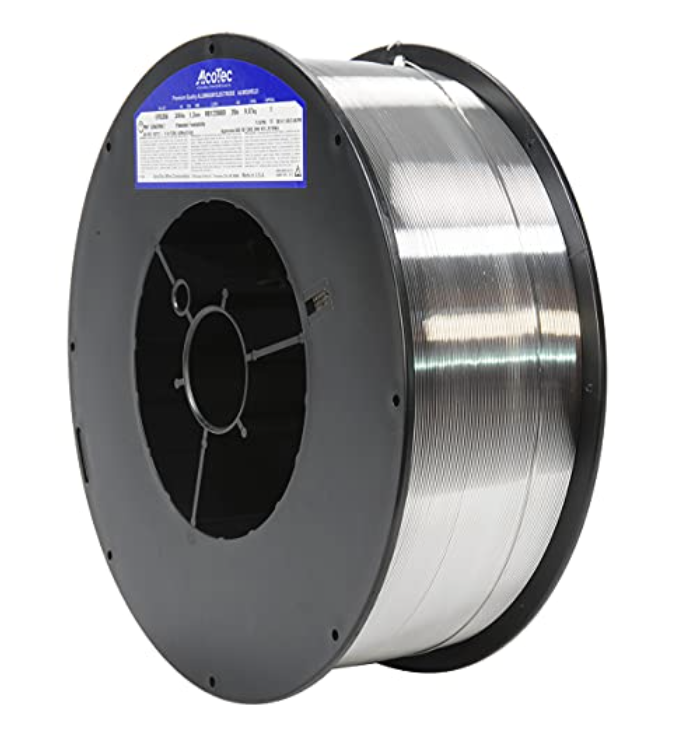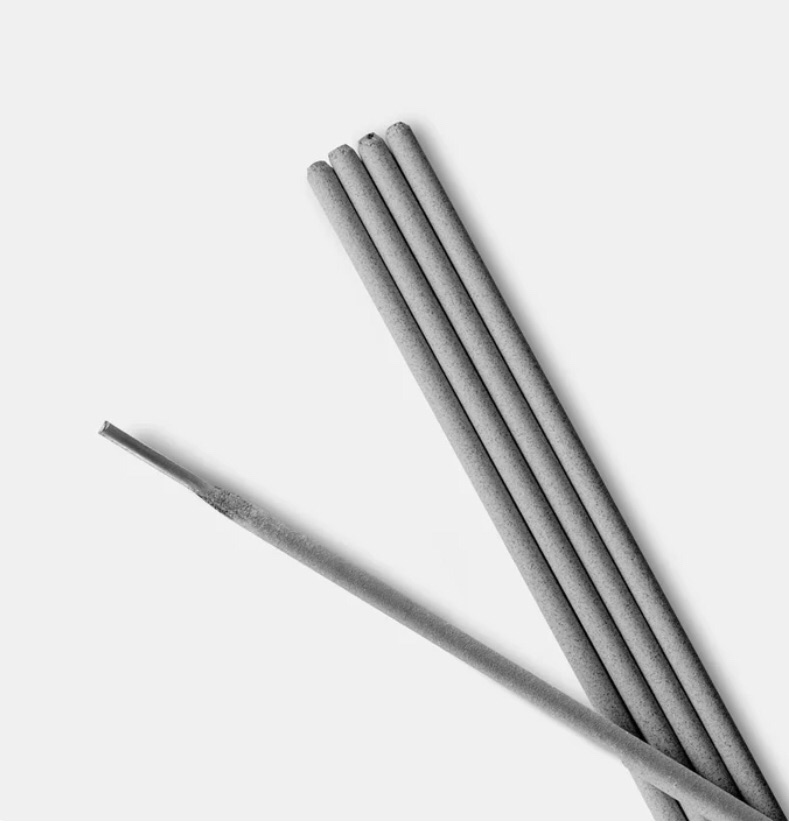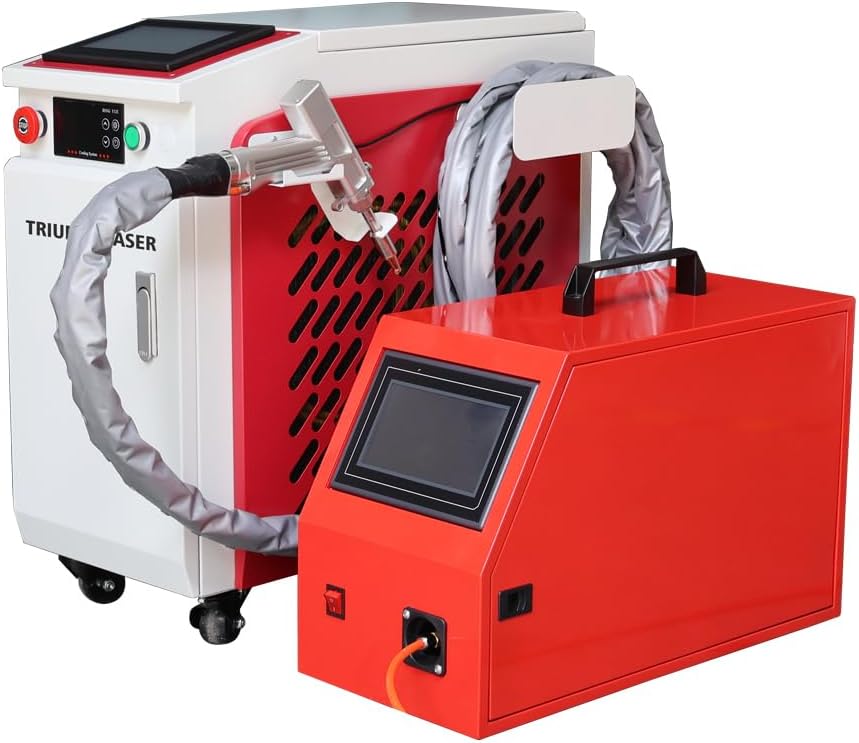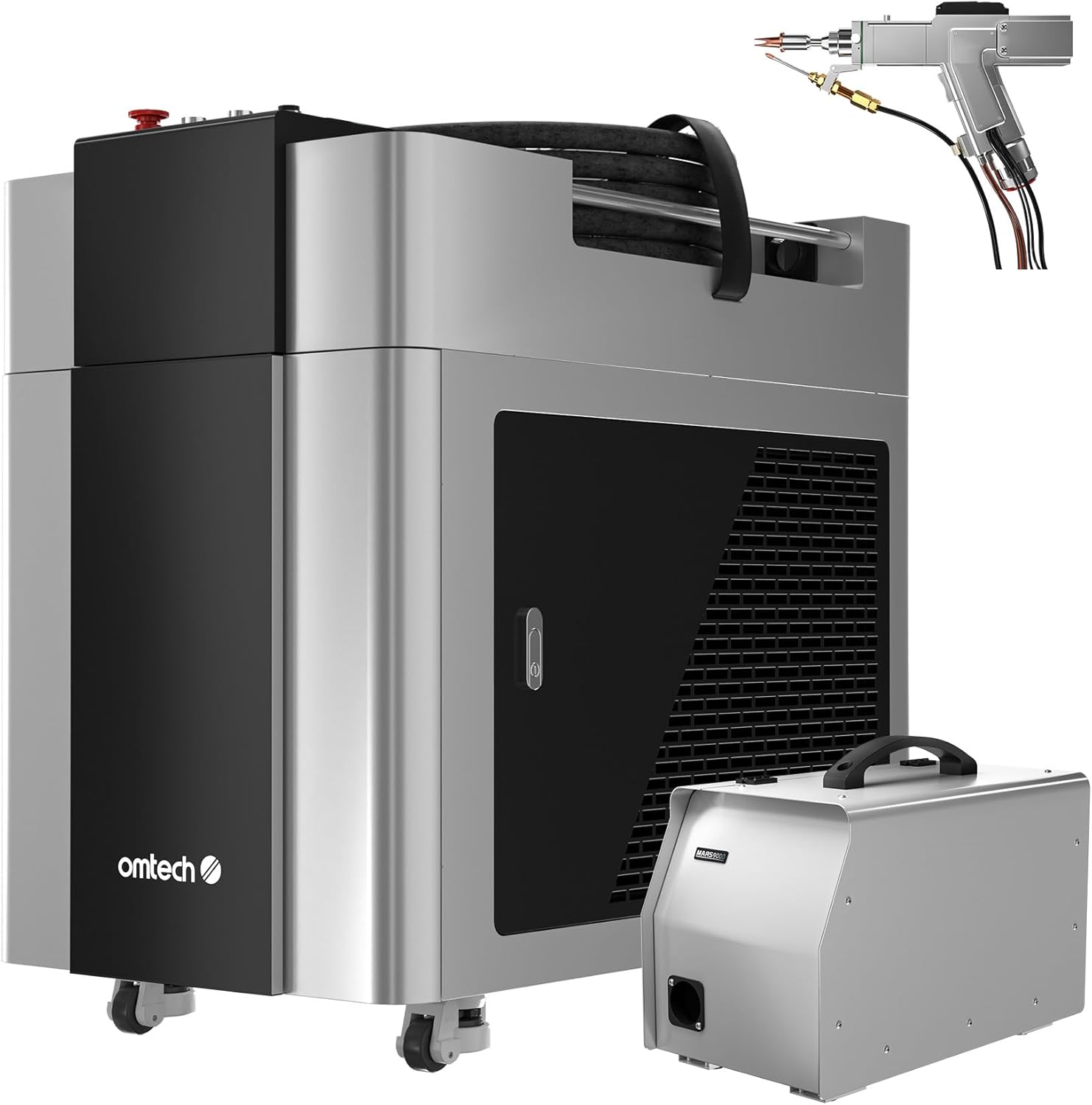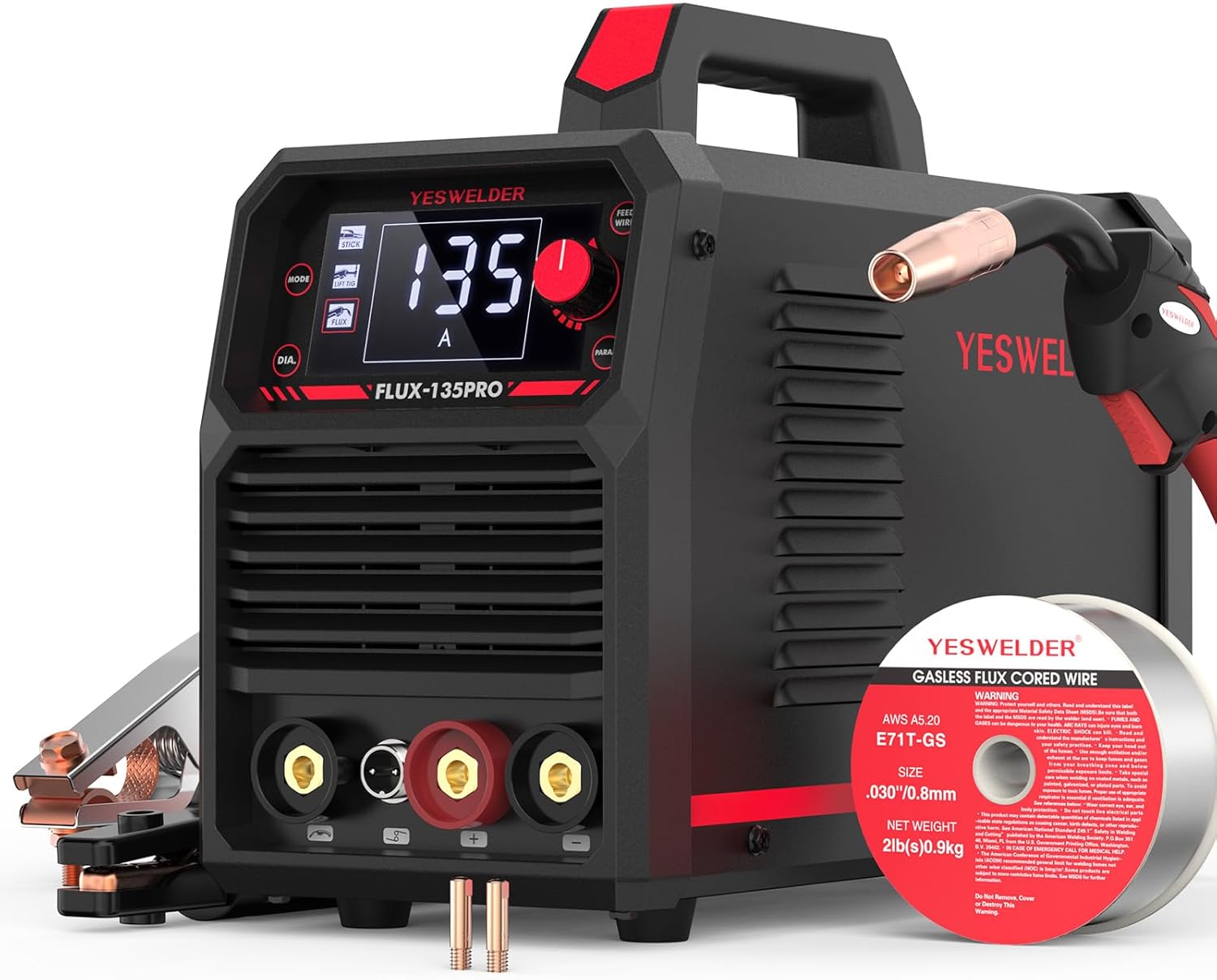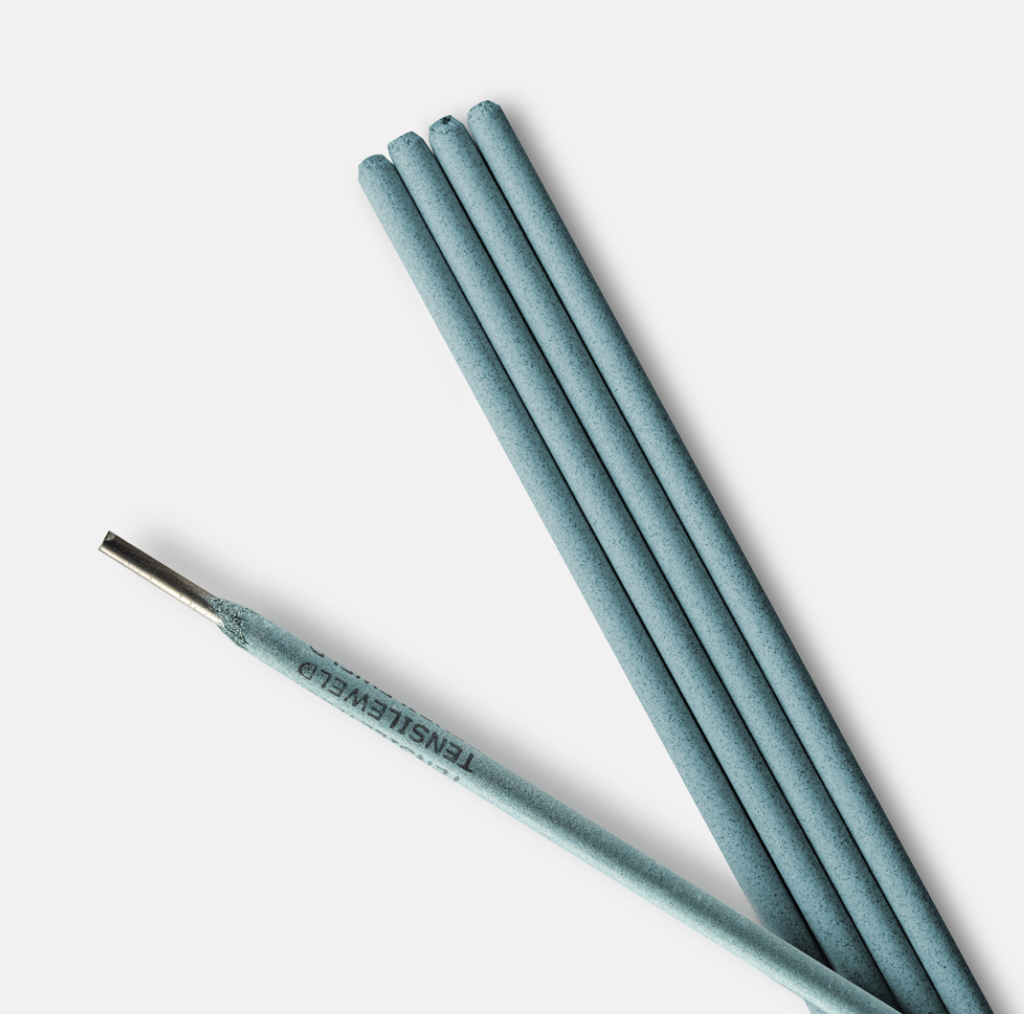Alcotec Aluminum 5356 MIG welding wire is one of the most commonly used filler metals for joining aluminum alloys through Gas Metal Arc Welding (GMAW). Manufactured by AlcoTec Wire Corporation, a leader in aluminum welding technology, this wire delivers excellent feedability, arc stability, and corrosion resistance across a wide range of applications.
It’s specifically designed to produce high-strength, corrosion-resistant welds in marine, structural, transportation, and manufacturing environments. Professional welders, engineers, and fabrication students alike rely on 5356 for its consistent performance, strength, and versatility.
Types / Variants / Models
AlcoTec manufactures 5356 wire in various spool sizes and packaging formats to fit different production environments:
Spool Sizes
- 1 lb, 5 lb, and 16 lb precision-wound spools for smaller or repair jobs
- 15 lb, 16 lb, and 20 lb coils for industrial fabrication
- 300 lb drums for robotic and automated MIG systems
Wire Diameters
- 0.030” (0.8 mm) – ideal for thin aluminum and sheet metal
- 0.035” (0.9 mm) – great for medium-thickness materials
- 3/64” (1.2 mm) and 1/16” (1.6 mm) – for heavy-gauge aluminum and structural work
Packaging Options
- Plastic spools for cleanroom or corrosion-sensitive applications
- Metal baskets or fiber-board coils for continuous industrial use
All AlcoTec 5356 wire is precision-drawn for smooth feeding, minimal porosity, and uniform diameter control—critical for both manual and automated welding systems.
Key Features & Specifications
| Specification | Details |
|---|---|
| Alloy Composition | Aluminum with ~5% Magnesium, plus trace Chromium & Manganese |
| AWS Classification | AWS A5.10 ER5356 |
| Tensile Strength | 38,000–40,000 psi |
| Current Type | DCEP (Direct Current Electrode Positive) |
| Voltage / Amperage Range | 24–30 V, 140–300 A depending on wire size |
| Shielding Gas | 100% Argon (preferred) or Argon/Helium blends |
| Certifications | AWS A5.10 ER5356 • CE • ABS • DNV Marine Approval |
| Applications | Marine, structural, and transportation aluminum assemblies |
The magnesium-rich formula gives ER5356 excellent corrosion resistance—superior to 4043 wire—and a strong, stable arc that supports high-deposition welding even on thick materials.
Usage & Compatibility
Alcotec 5356 wire is engineered for MIG (GMAW) welding processes using Spray Transfer and Pulsed Spray Transfer modes.
It works with most major wire feed systems including Miller Millermatic®, Lincoln Electric®, and ESAB® units.
Pros
- Excellent wire feedability and consistent arc performance
- High strength and crack resistance for load-bearing aluminum
- Outstanding corrosion resistance in saltwater and marine settings
Cons
- Not recommended for anodized finishes (may appear darker)
- Slightly stiffer than 4043, requiring a precise drive setup
- Can crack if used on incompatible alloys (always verify base metal compatibility)
Common Applications
- Marine fabrication & boatbuilding: hulls, decks, brackets, and offshore structures
- Transportation: truck trailers, railcars, automotive frames, and aerospace fixtures
- Structural & architectural projects: aluminum frameworks, platforms, and supports
- General fabrication: workshops, training facilities, and aluminum repair shops
Its mechanical strength and corrosion resistance make Alcotec 5356 one of the most trusted aluminum filler wires in the welding industry.
Tips & Best Practices
Setup & Operation
- Use U-groove drive rollers to avoid wire shaving and contamination
- Always push the torch (never pull) for proper shielding gas coverage
- Clean aluminum thoroughly — remove oxide, paint, oil, and debris
- Suggested amperage:
- 0.035” → 140–180 A
- 3/64” → 200–260 A
Maintenance & Storage
- Store spools in a dry, ventilated area
- Handle with clean gloves to prevent carbon or oil transfer
Troubleshooting
| Issue | Cause | Fix |
|---|---|---|
| Porosity | Poor gas flow or dirty material | Clean surface, verify gas coverage |
| Cracking | Alloy mismatch | Confirm base alloy is 5xxx or compatible |
| Bird-nesting | Tension too tight / wrong liner | Use soft-feed liner and proper tension |
Conclusion
Alcotec 5356 aluminum MIG wire is a go-to filler metal for professionals who demand strength, corrosion resistance, and reliability in aluminum fabrication. Whether used in marine, automotive, or structural applications, it delivers consistent results with minimal porosity and smooth arc characteristics.
If your project involves high-strength aluminum welding in corrosive or load-bearing environments, Alcotec’s ER5356 wire remains a professional standard—just make sure it’s compatible with your base alloy.
Where to Buy Alcotec 5356 MIG Welding Wire
You can find Alcotec ER5356 Aluminum MIG Wire from verified Amazon sellers and welding-supply distributors.
Use the link below to check the current price and availability:
Available Options:
-
.030″ ER5356 AlcoTec Almigweld 5356 Aluminum MIG Welding Wire 1 Spool
- AWS A5.10/ ASME SFA-5.10
- Alloy: 5356
- Diameter .030
- Spool: 1 lb / 1 spool
Last update on 2025-12-05 / Affiliate links / Images from Amazon Product Advertising API
– 0.030″ x 1 lb spool -
.035″ ER5356 AlcoTec Almigweld 5356 Aluminum MIG Welding Wire 1 Spool
- Diameter .035″
- AWS Classification ER5356
- Weight 1 lb
- Trade Name ALMIGWeld
- Welding Filler Wire
Last update on 2025-12-05 / Affiliate links / Images from Amazon Product Advertising API
– 0.035″ x 1 lb spool -
Last update on 2025-12-05 / Affiliate links / Images from Amazon Product Advertising API
– 3/64″ x 1 lb spool -
ER5356 .035 16# Spool Alum MIG Wire
- Price For: Each Welding Method: GMAW Diameter: 0.035 Material: Aluminum Tensile Strength: Not Applicable For Aluminum AWS Classification: ER5356 Container Size: 16# Spool Welding Wire Type: Solid Container Type: Cardboard Box Item: ER5356 .035 16# Spool Alum MIG Wire Series: Alcotec 5356 NT Country of Origin (subject to change): United States
Last update on 2025-12-05 / Affiliate links / Images from Amazon Product Advertising API
– 0.035″ x 16 lb spool -
SaleER5356 3/64 20# Spool Alum MIG Wire
- Price For: Each Item: ER5356 3/64 20# Spool Alum MIG Wire Welding Wire Type: Solid Container Type: Cardboard Box Tensile Strength: Not Applicable For Aluminum Series: Alcotec 5356 NT Container Size: 20# Spool AWS Classification: ER5356 Welding Method: GMAW Material: Aluminum Diameter: 3/64 Country of Origin (subject to change): United States
Last update on 2025-12-05 / Affiliate links / Images from Amazon Product Advertising API
– 3/64″ x 20 lb spool
Affiliate Disclosure
This post contains affiliate links. If you purchase through these links, we may earn a small commission at no additional cost to you. This supports the site and helps us continue creating helpful welding content.
